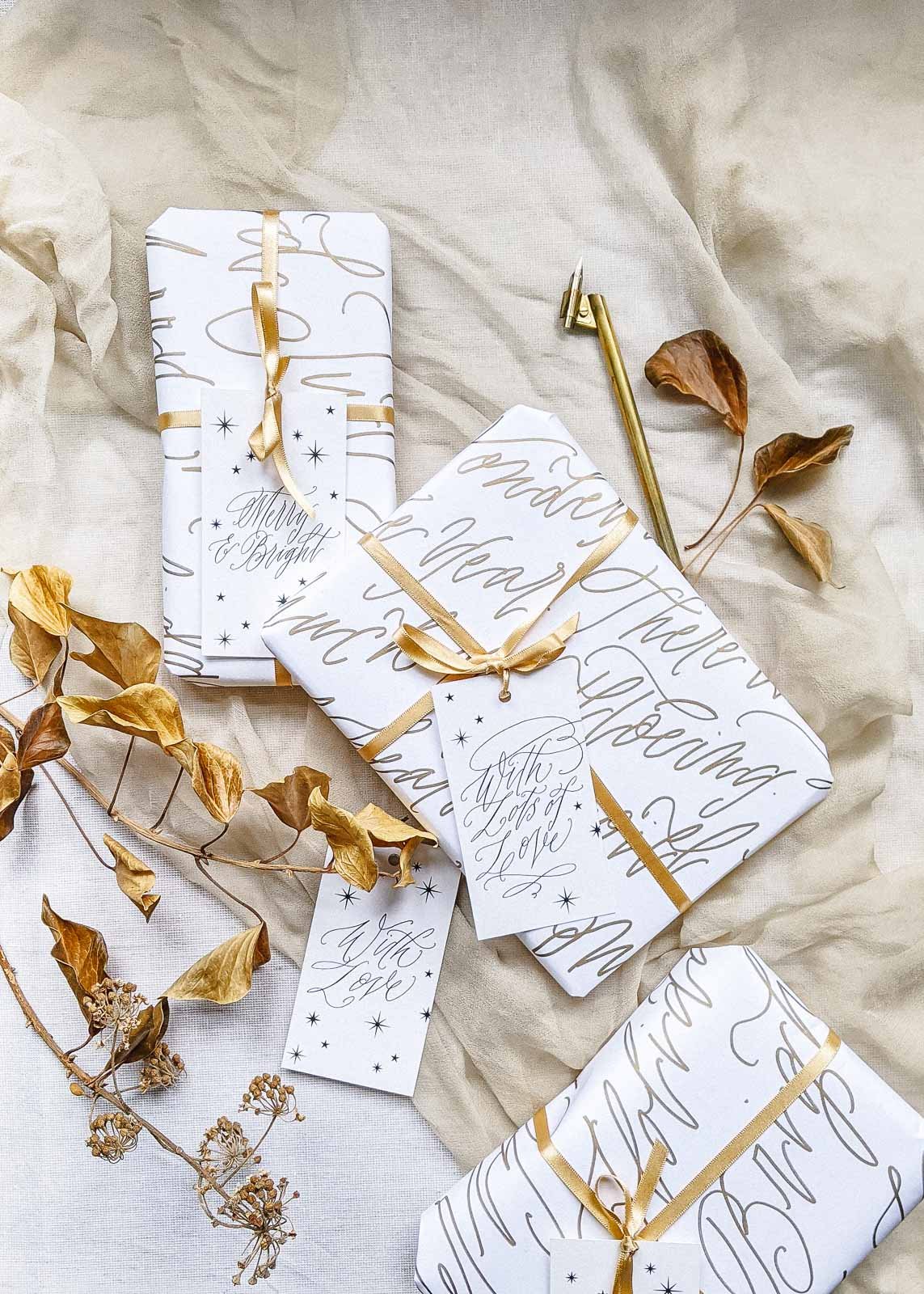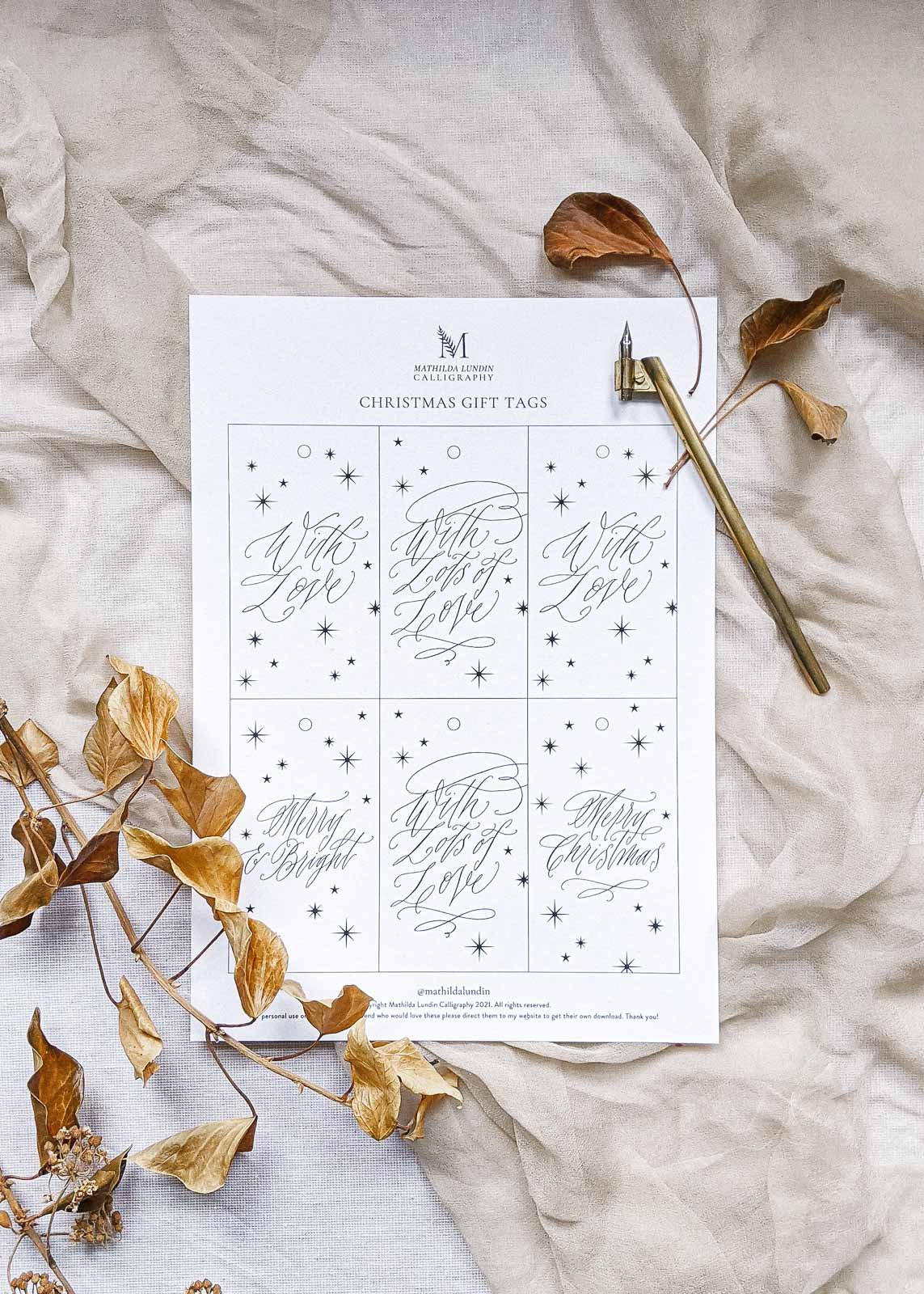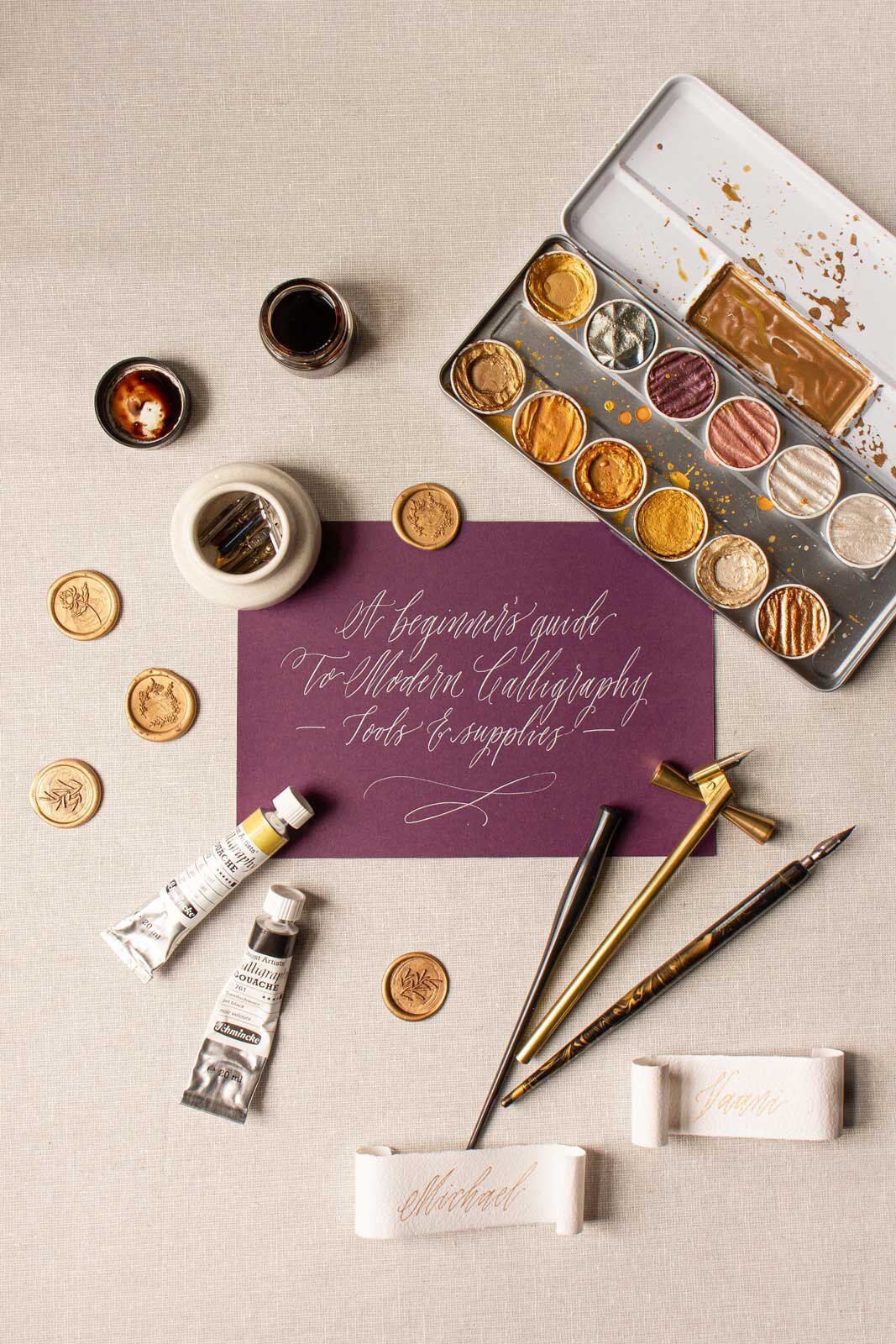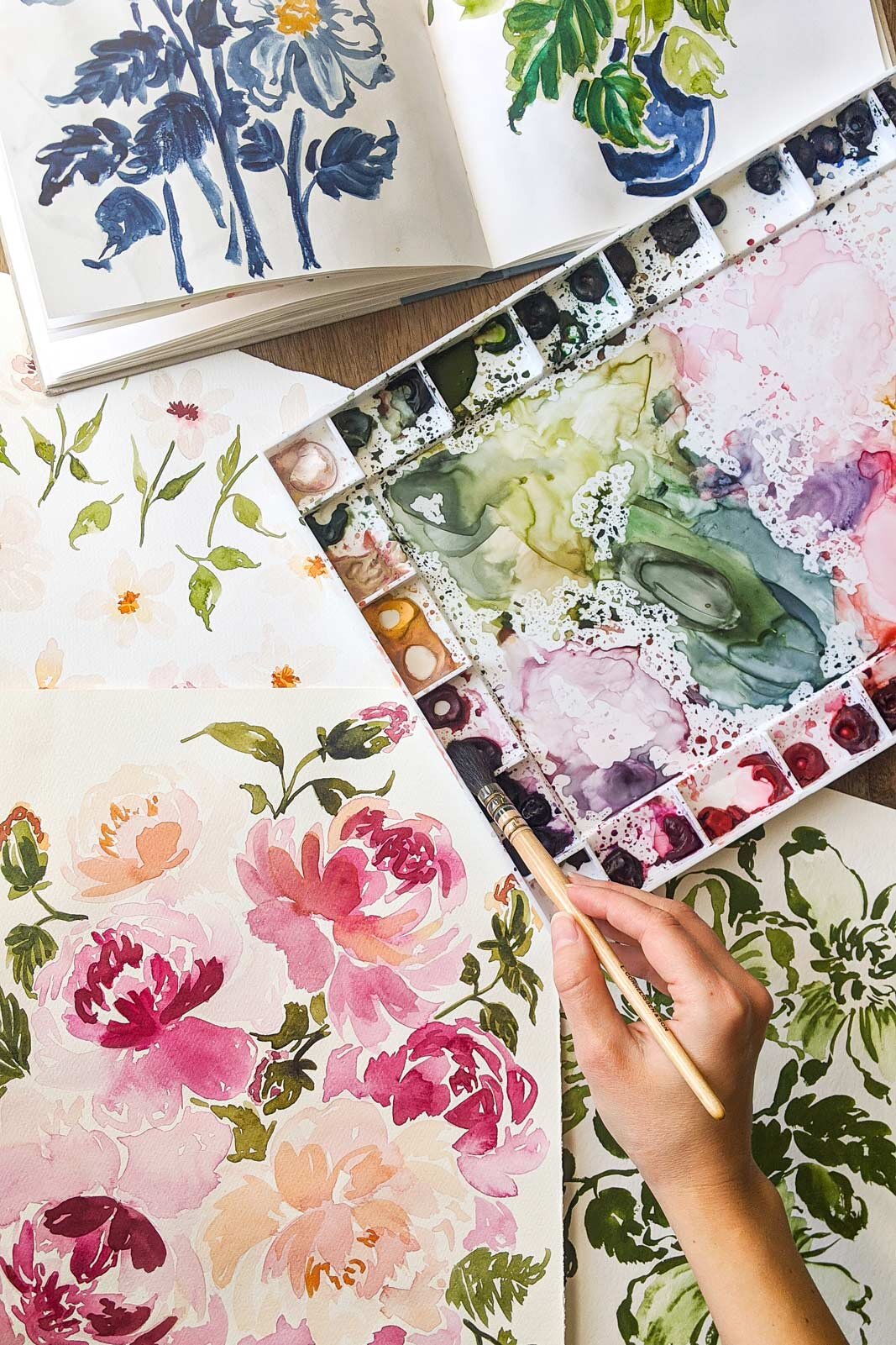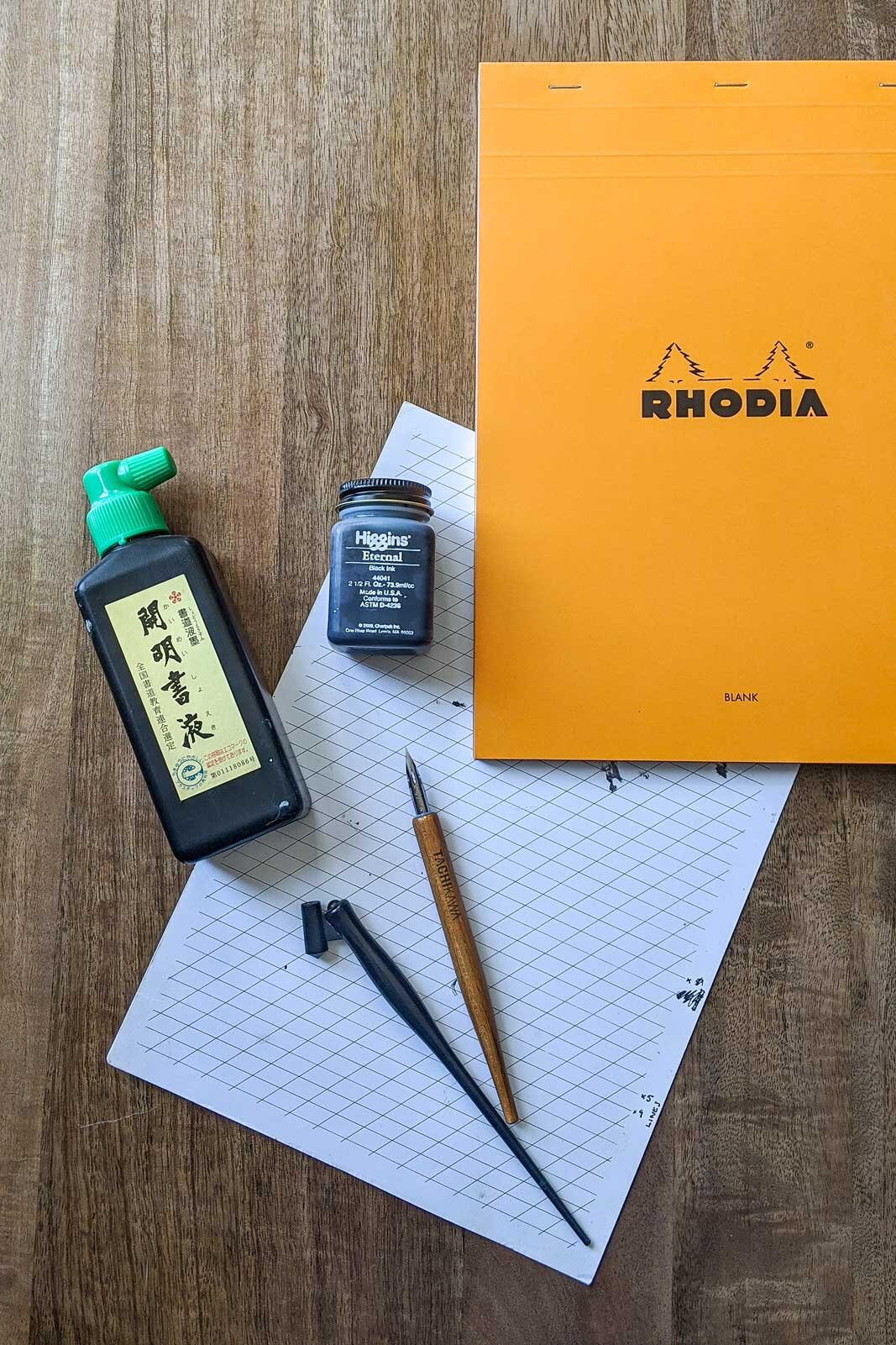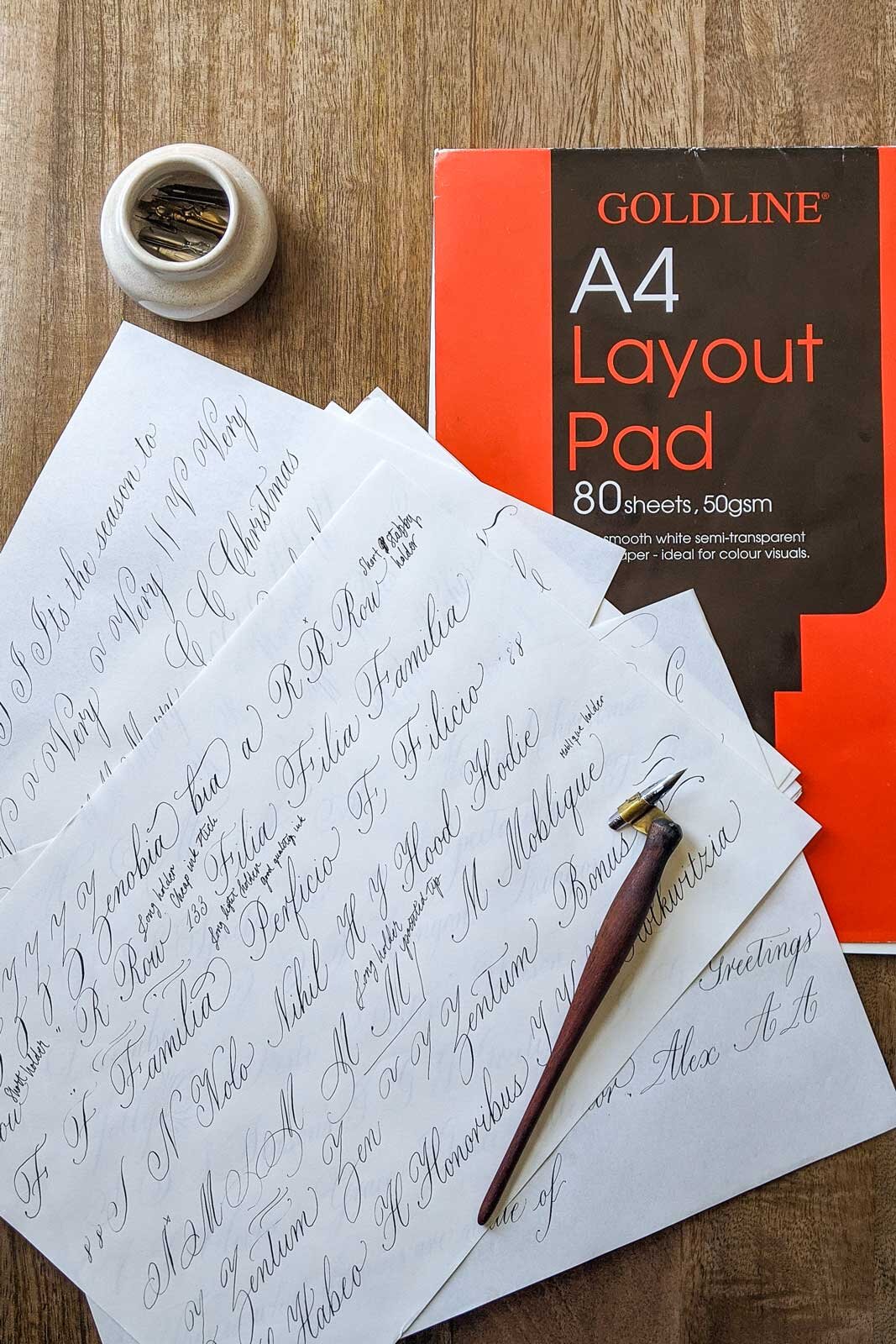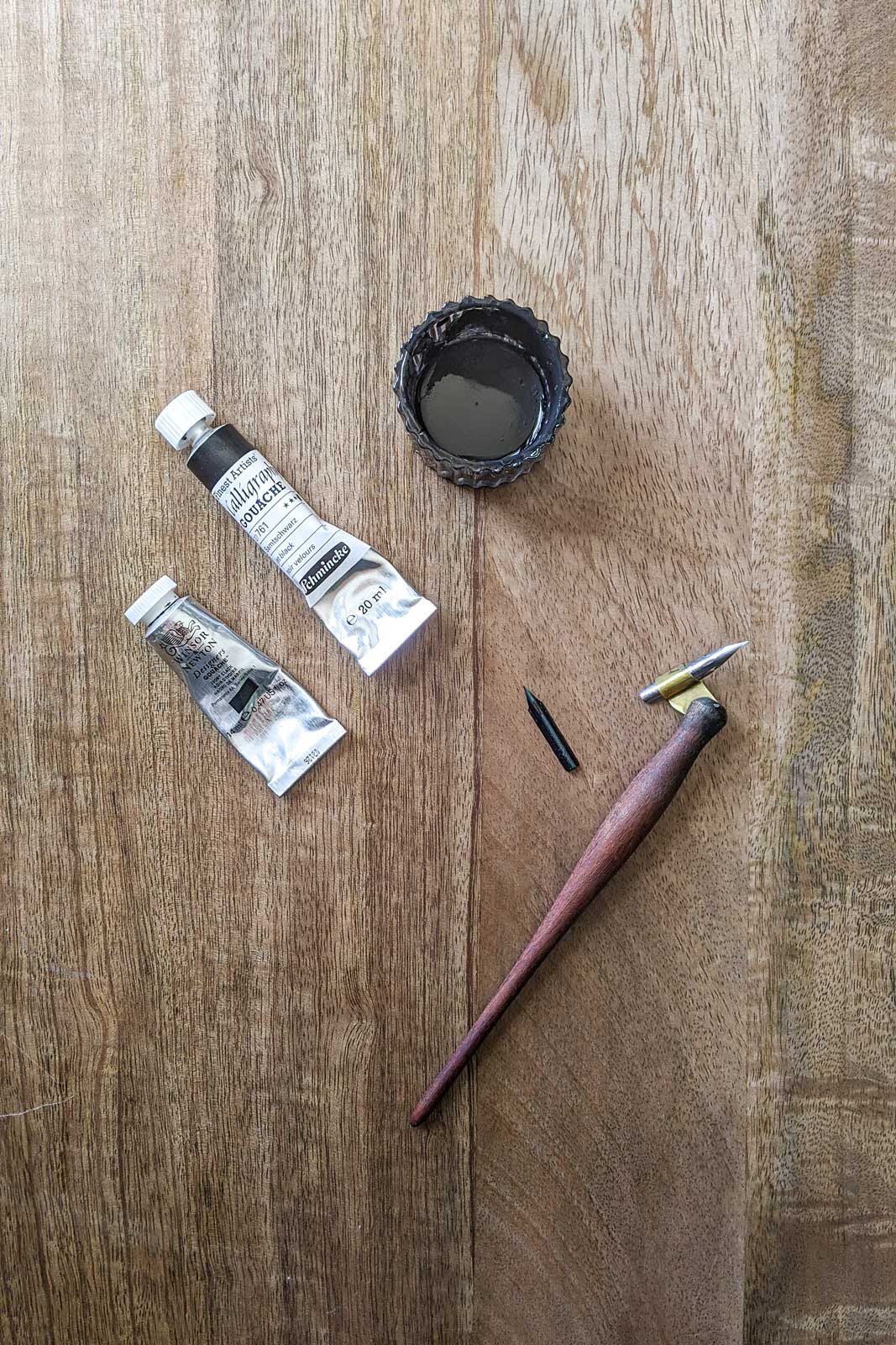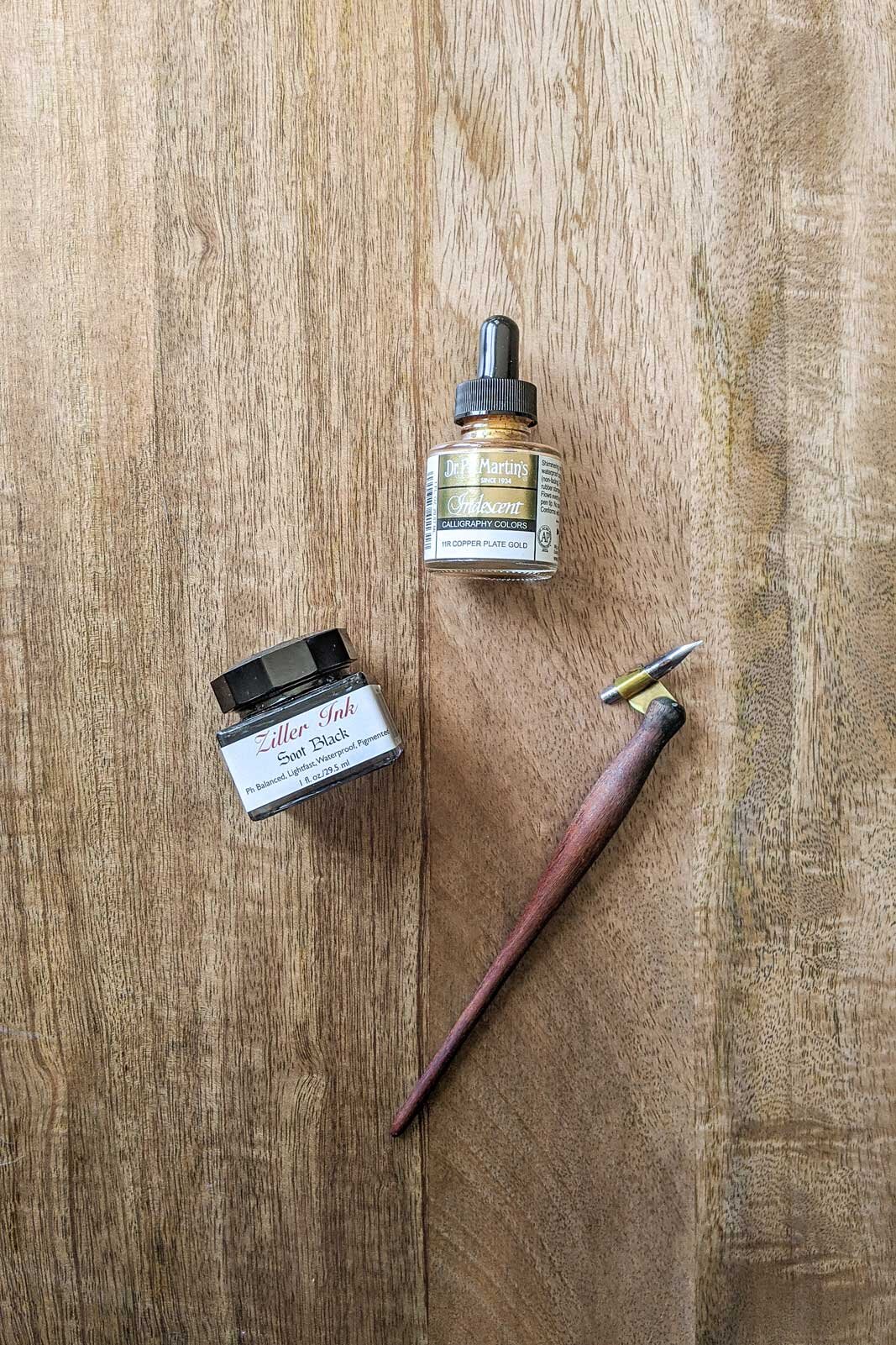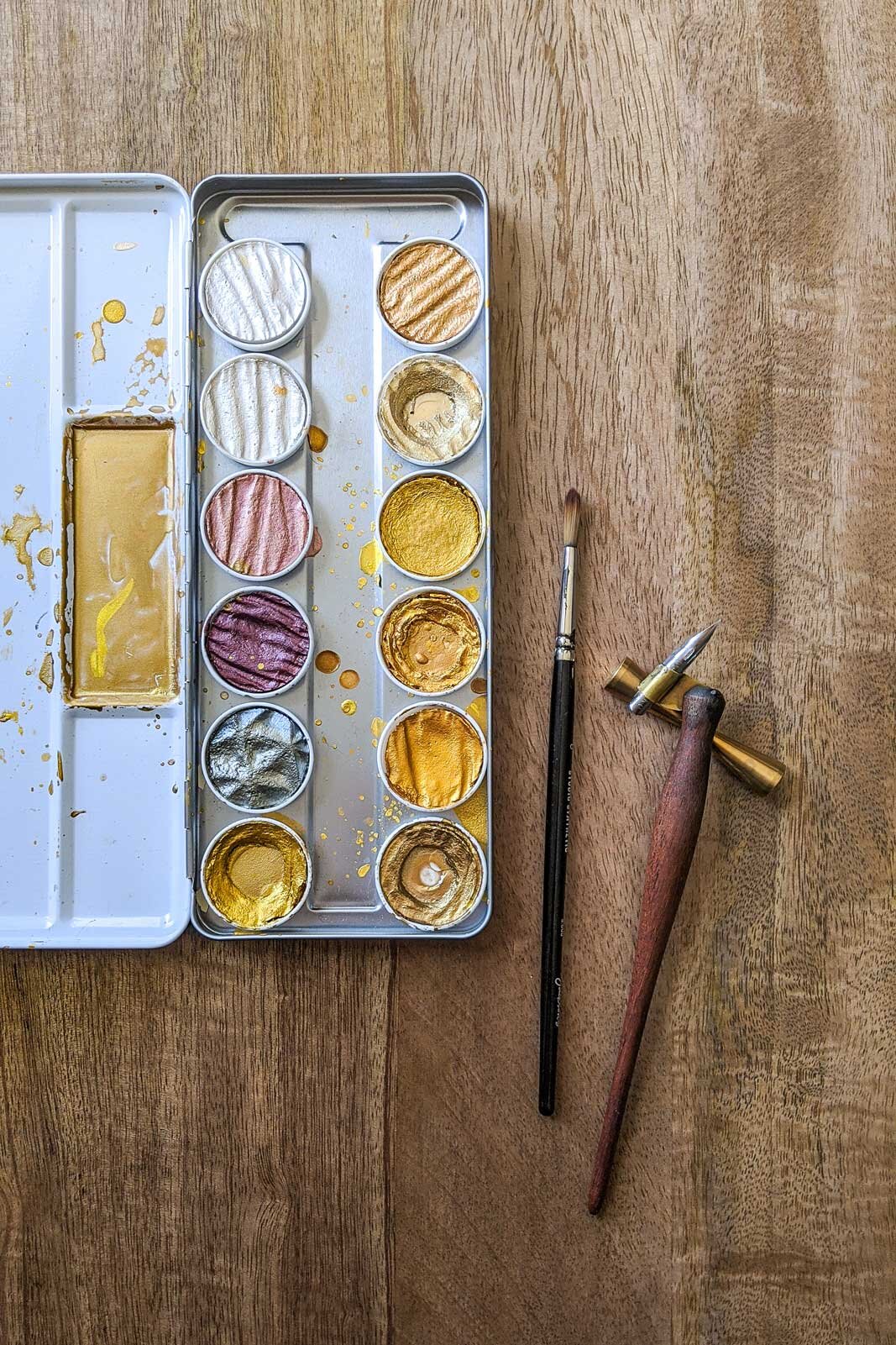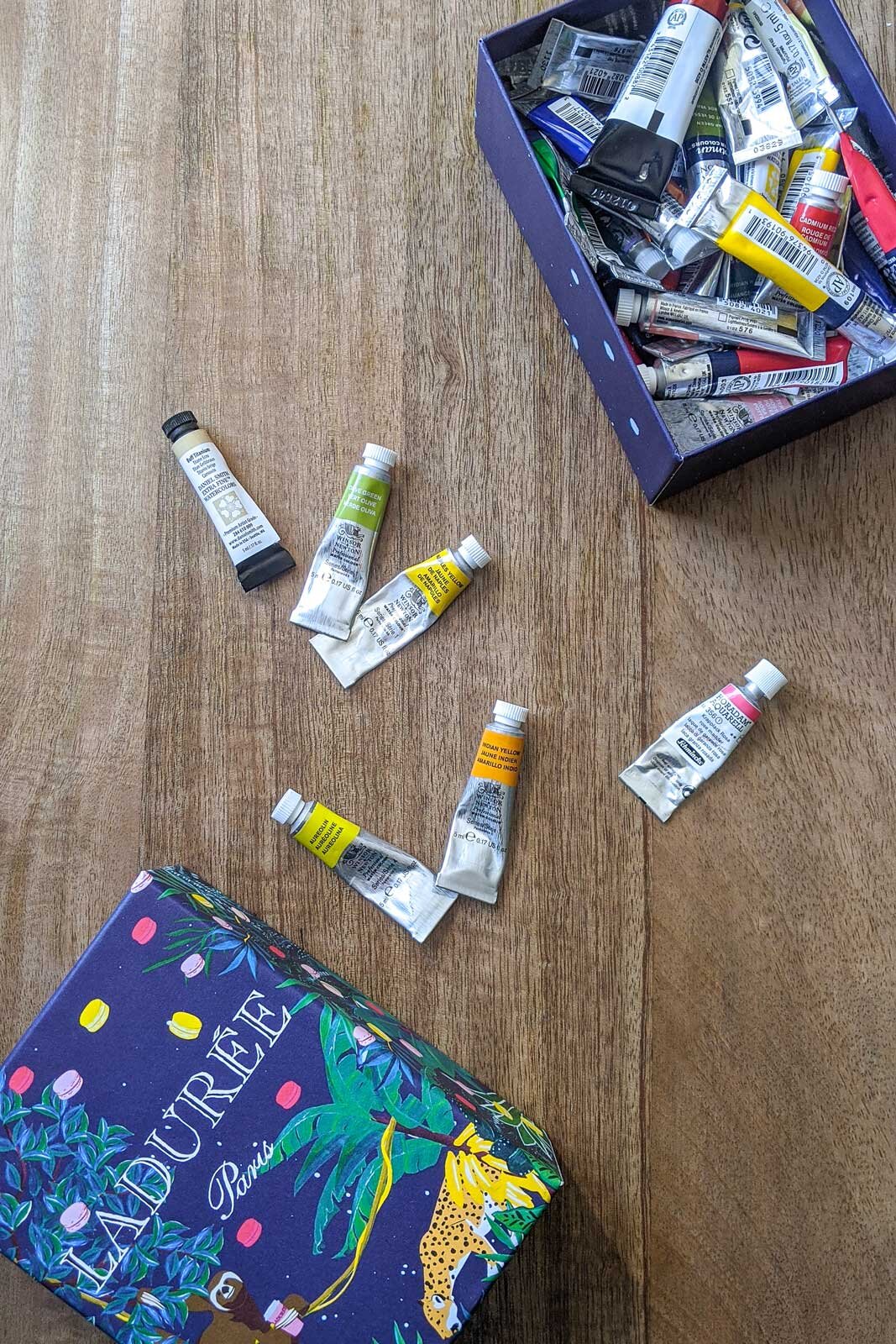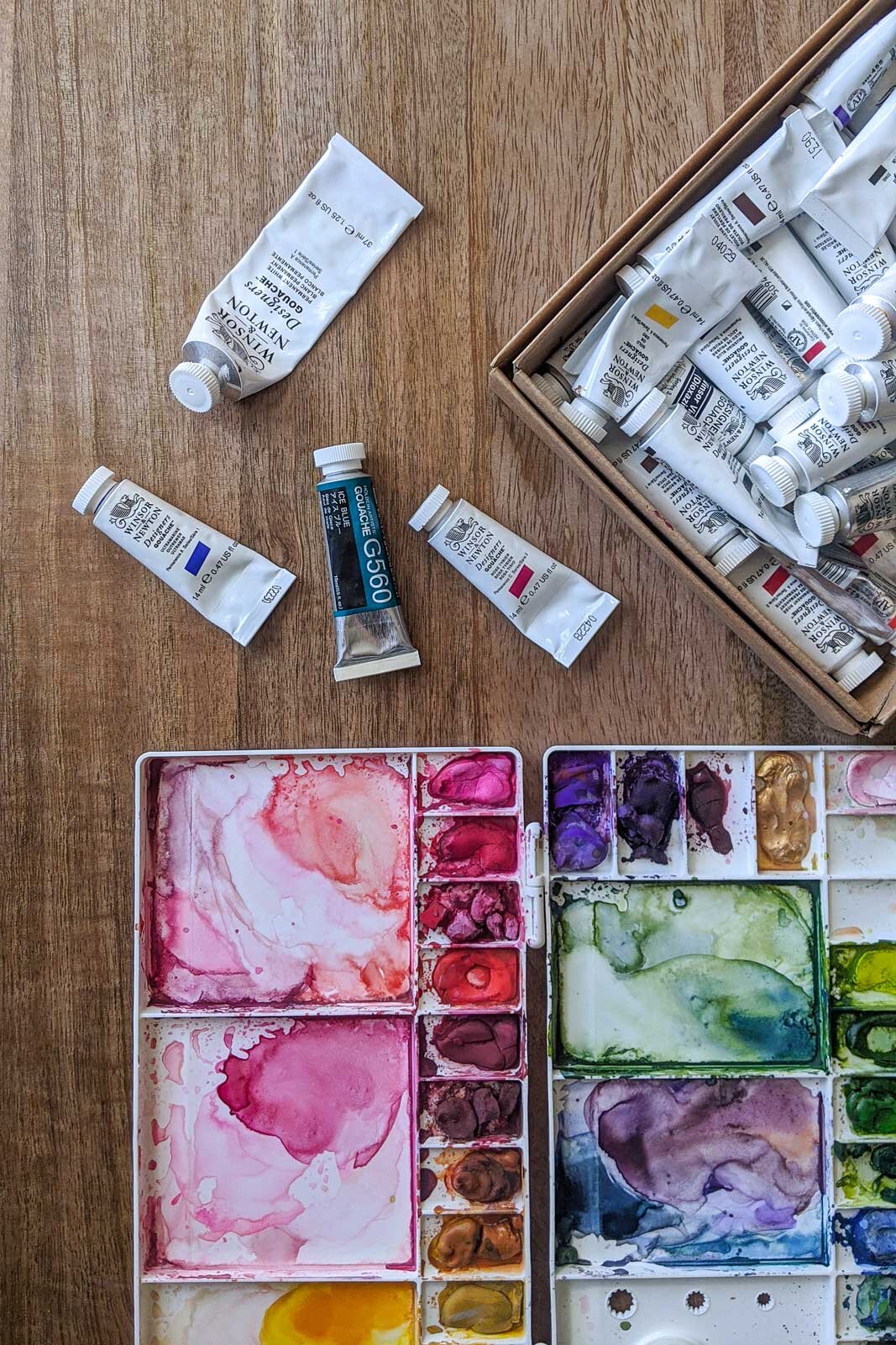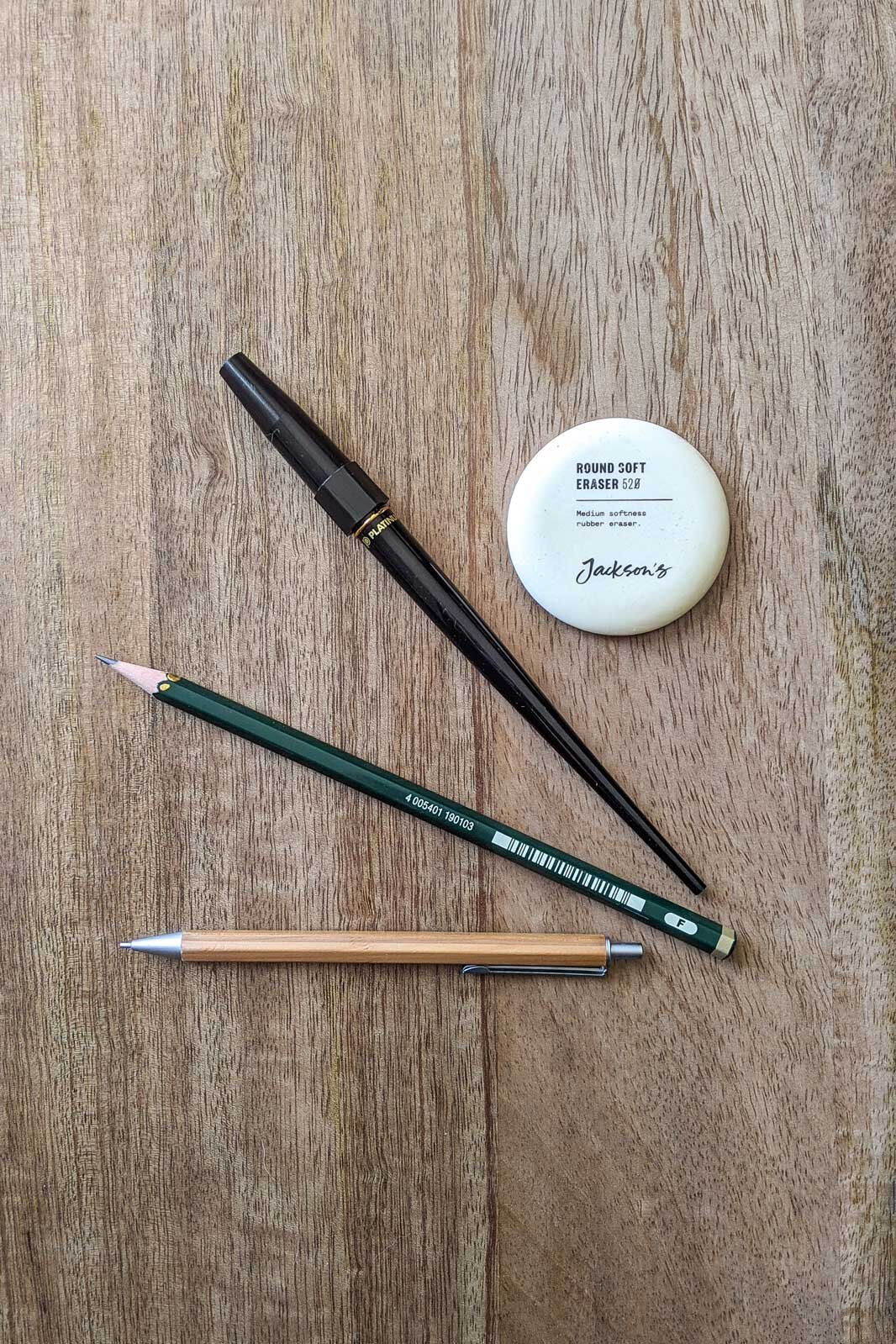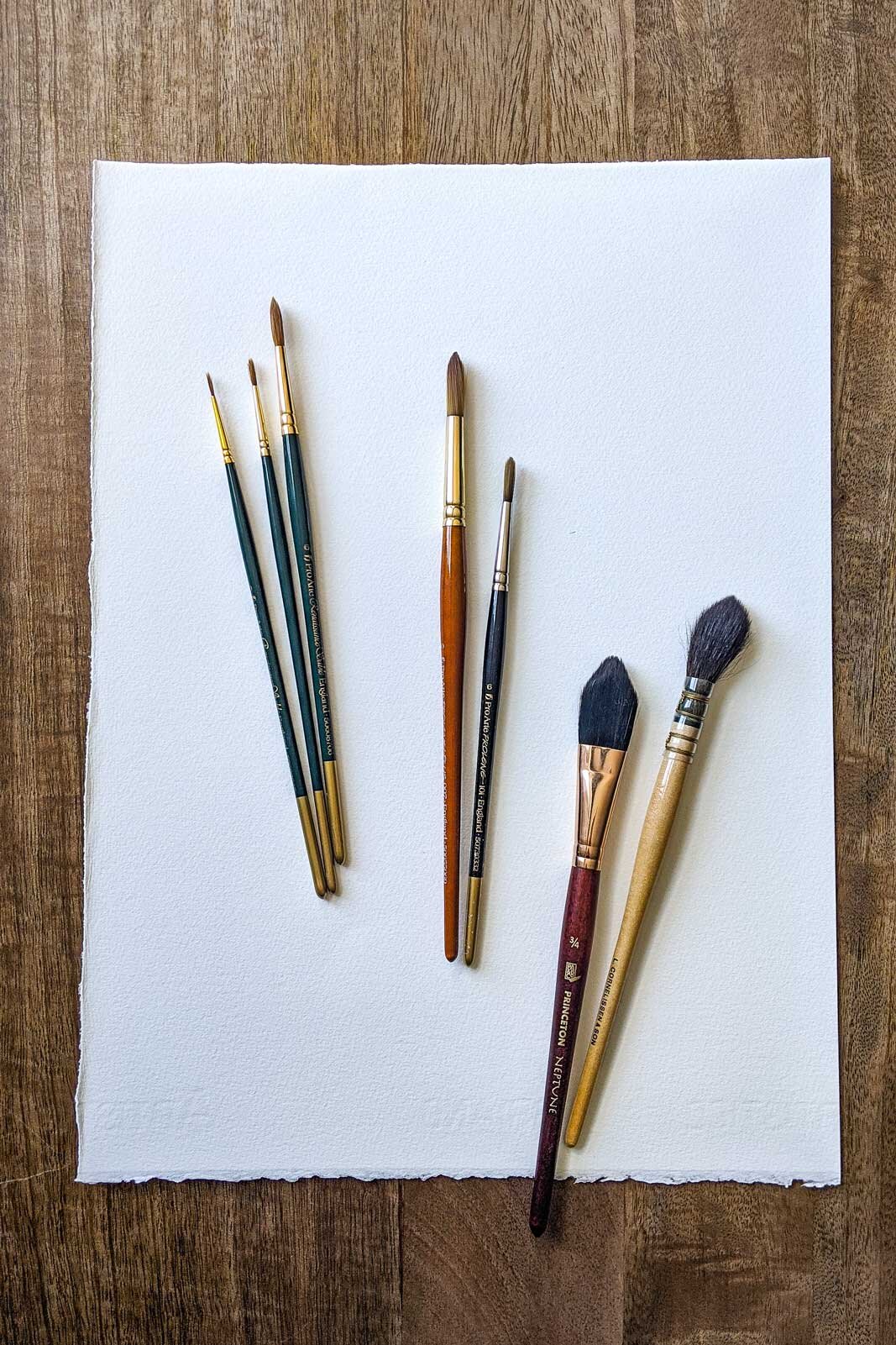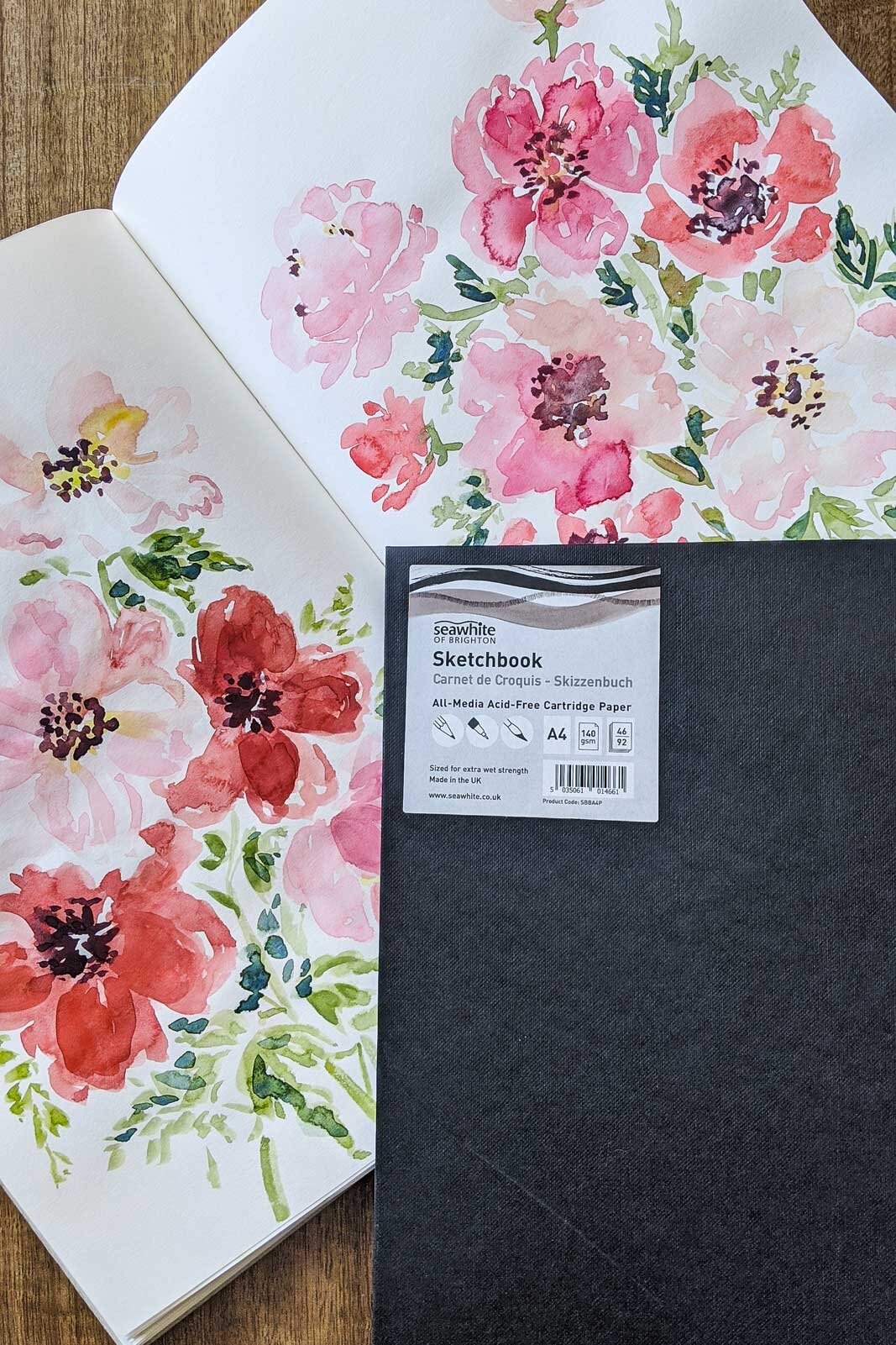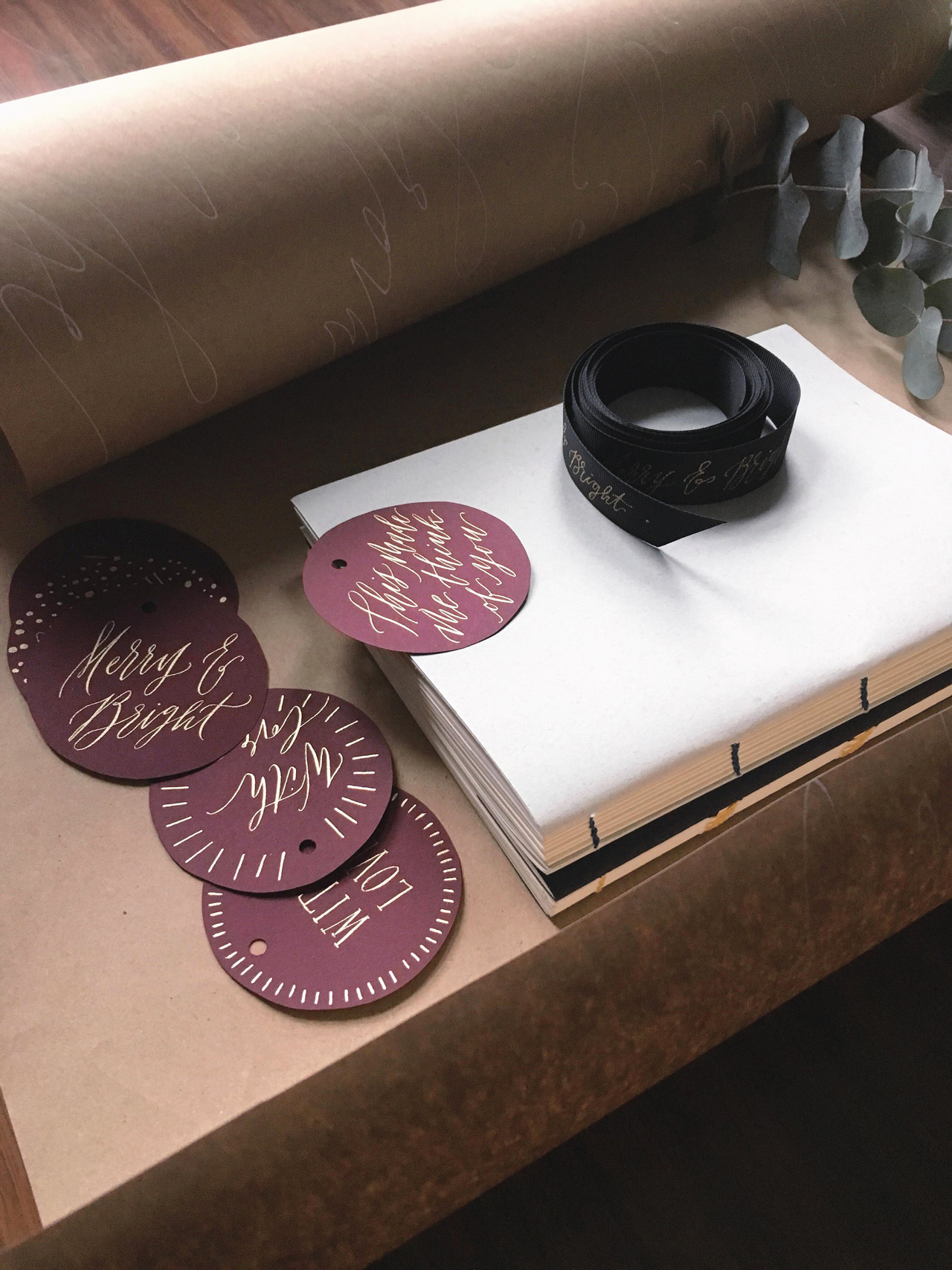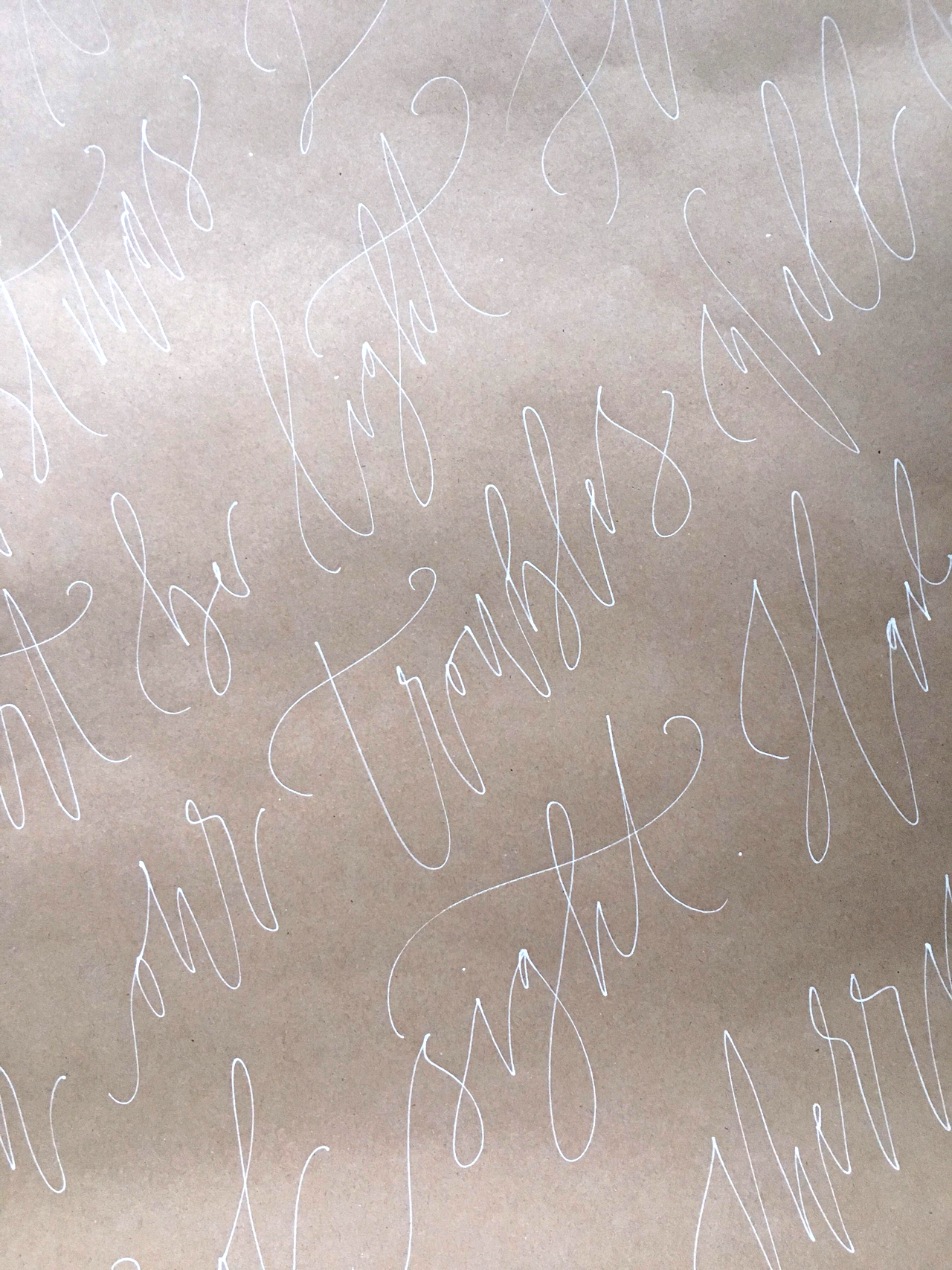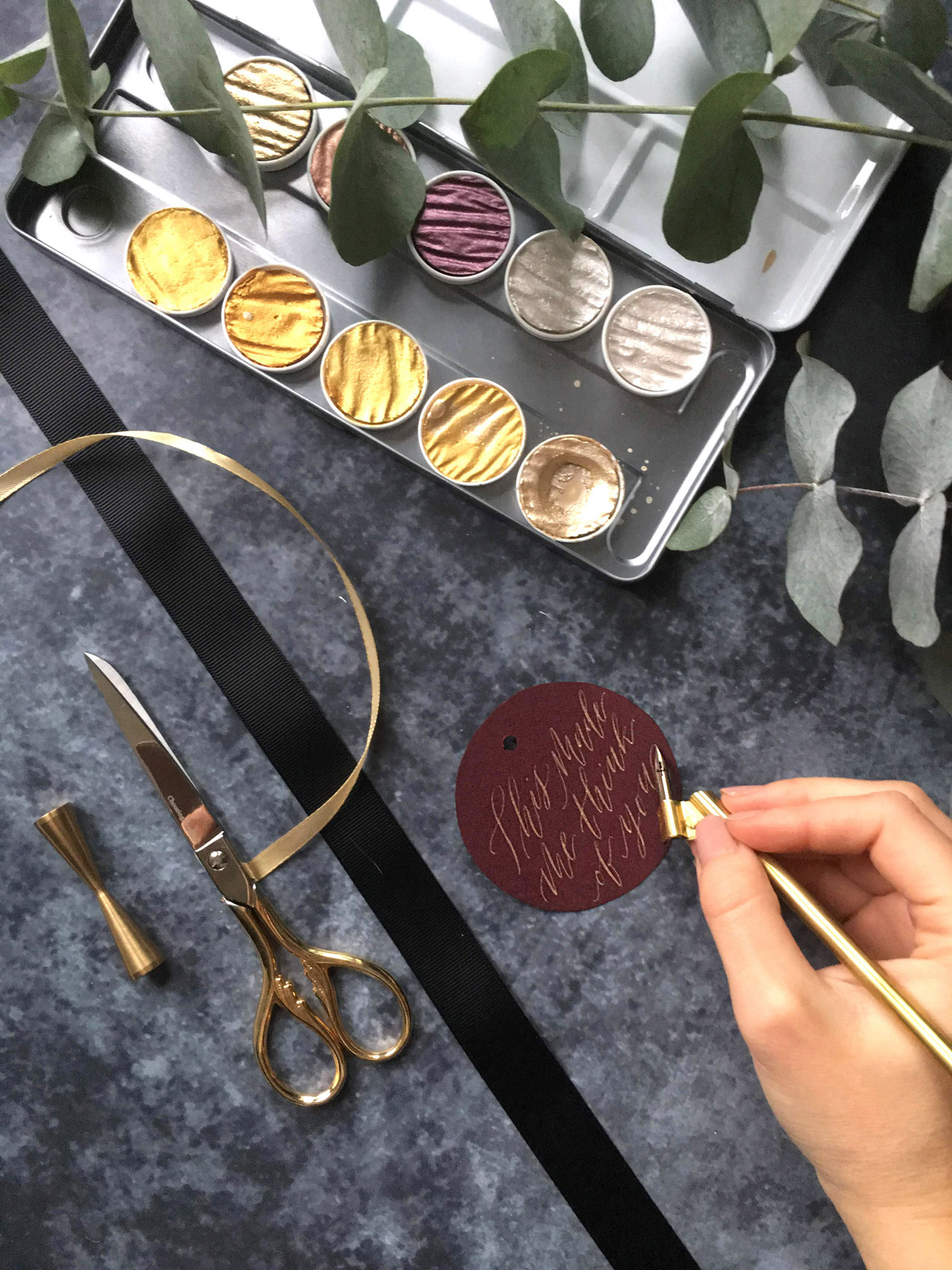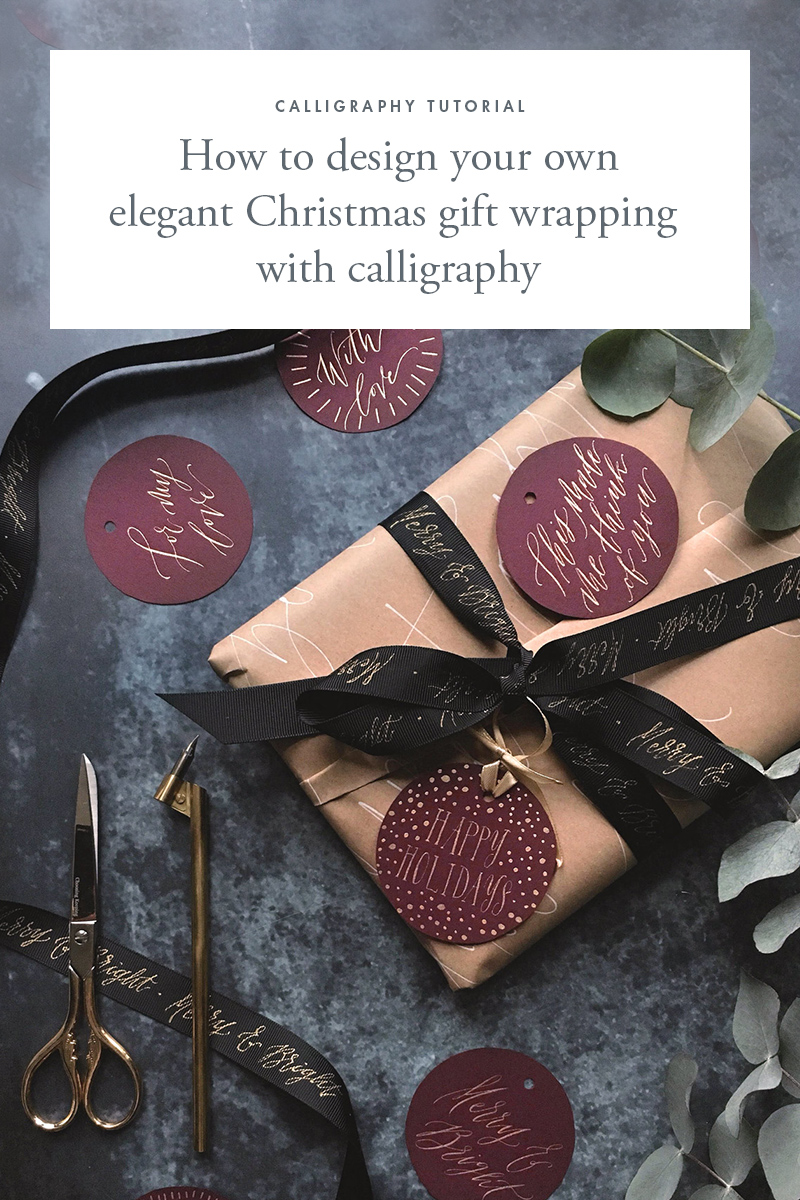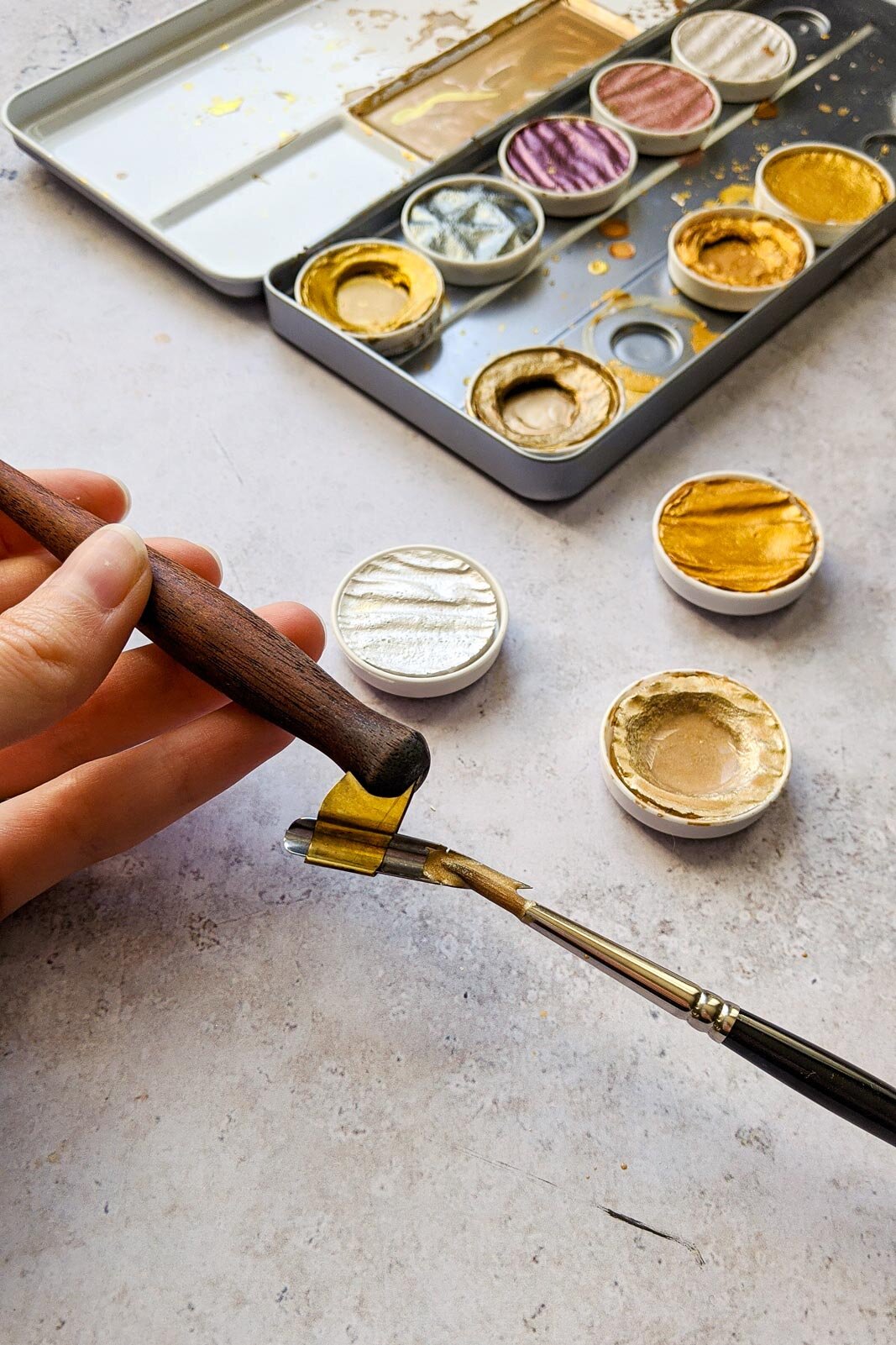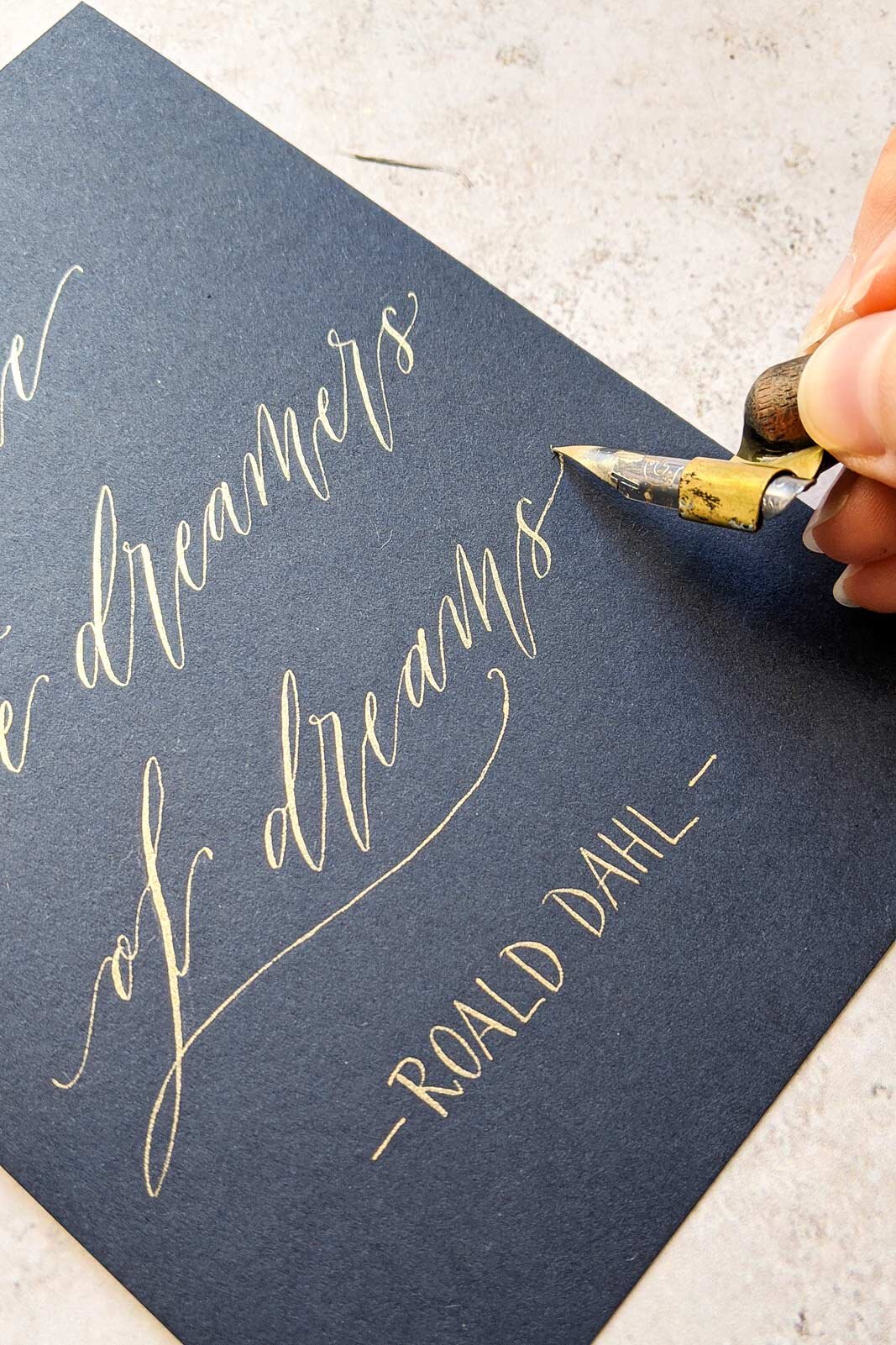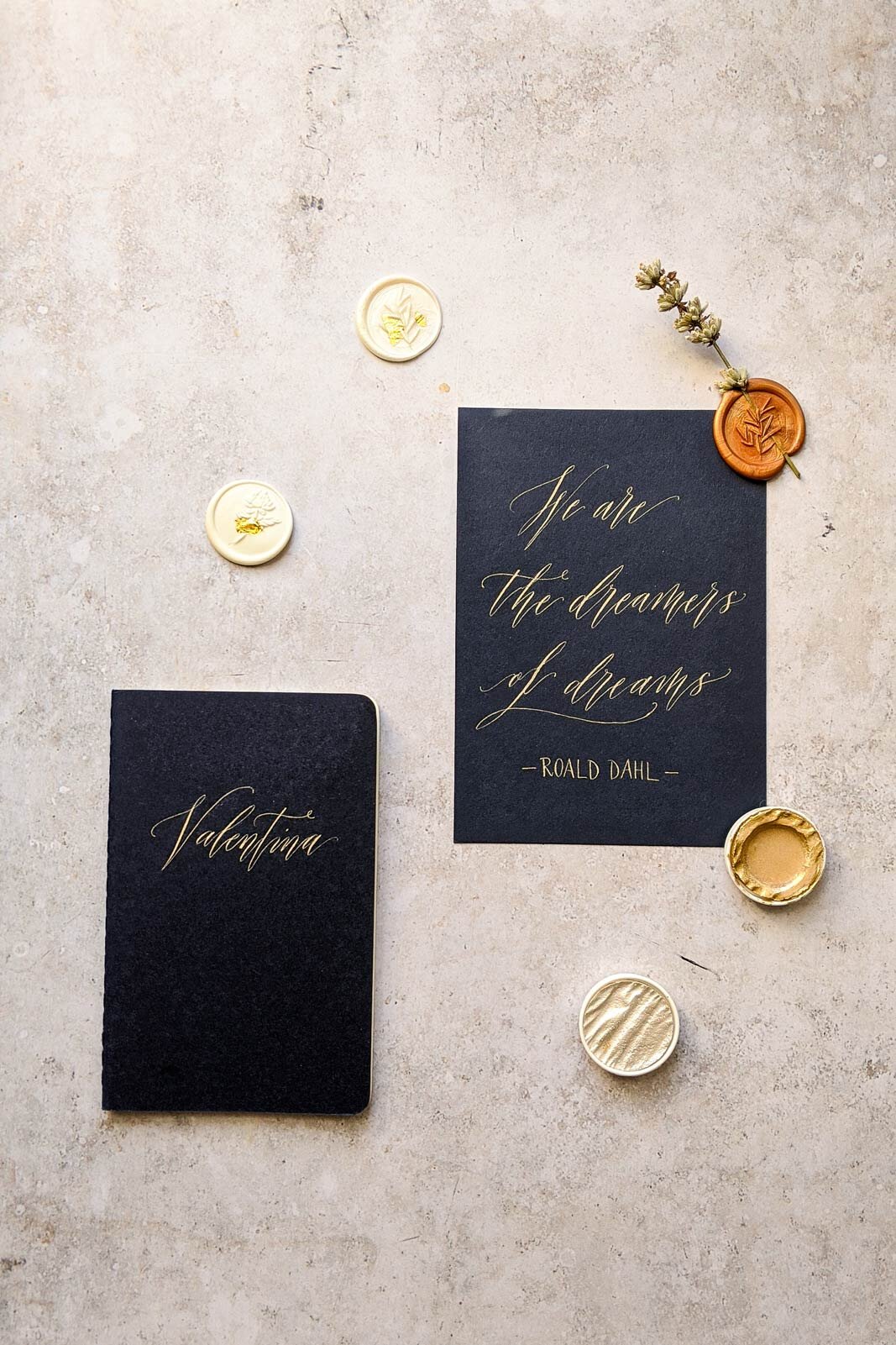The essential kit
There’s so many beautiful calligraphy tools out there. But there’s only a few that are essential to start your practice. A nib, a penholder, an ink, paper and guide sheets.
Nibs
There’s lots of nibs out there and you’ll probably find you like some more than others. It really depends on your technique and I favour different ones for different materials and styles. But for beginners there’s two that I think are absolutely brilliant.
Nikko G – https://scribblers.co.uk/product/nikko-g-nib/?ref=9 *
This is a Japanese nib that is quite sturdy, making it great for when you start out and are getting a hang of the technique and different angels.
Brause 361 – https://scribblers.co.uk/product/brause-361-steno-nib/?ref=9 *
Also known as the Blue Pumpkin this nib is more flexible than the Nikko G. Which will give you thicker downstrokes with less pressure and is great fun to play around with and compare to the Nikko G. I like to use it on rougher textures.
Pen holders
There’s two main types of pen holders that you will see, straight holders and oblique holders. I recommend beginners to start with a straight penholder. It’s just a bit more straightforward as it looks more like a “normal pen” and will give you one less angle to think about. Oblique holders are fantastic if you like your script to have a slant. But some people find them a bit tricky to get the hang of initially. Which is why I recommend the straight holder to start, and to then move on to an oblique holder when you’ve got a hang of the technique.
You might find that you like both for different styles while others find they have a clear preference. I also find that a lot of the left handed calligraphers I’ve taught prefer to use a straight pen holder for both straighter and more slanted scripts.
Straight holders
Speedball pen holder – https://scribblers.co.uk/product/speedball-penholder/?ref=9 *
A great budget friendly option.
Cork tip pen holder – https://scribblers.co.uk/product/cork-tip-penholder/?ref=9 *
If you do a lot of calligraphy I find myself reaching for a holder made out of wood or with a cork tip like this one. For me it sits better in my hand and keeps me comfortable writing for longer.
Oblique holders
Oblique pen holder with a metal flange – https://scribblers.co.uk/product/plastic-oblique-pen-holder-with-metal-flange/?ref=9 *
For oblique holders I recommend using one with a metal flange. Because it’s made out of metal you can adjust the flange for your nib to fit properly, making for smoother writing. The downside to this is that if you’re left handed you need to get one that is made to be used for left handed calligraphers so make sure to check that before you buy one.
Speedball oblique pen holder – https://scribblers.co.uk/product/oblique-penholder/?ref=9 *
A great budget friendly option that works for both right and left handed calligraphers.
Ornamental wooden oblique pen holder – https://scribblers.co.uk/product/ornamental-wooden-oblique-holder-with-metal-flange/?ref=9 *
As with the straight holders I tend to use one that is made out of wood as I find it more comfortable.
Inks
Higgins Eternal Ink – https://scribblers.co.uk/product/higgins-eternal-ink-74ml/?ref=9 *
A very popular ink here in the UK. It’s lovely a smooth to write with and quite thin which helps with creating fine hairlines (upstrokes). I do find it can bleed on some papers though so make sure to test it before you start a new project.
Sumi Ink – https://scribblers.co.uk/product/kuretake-sumi-ink-60ml/?ref=9 * or https://www.amazon.co.uk/Moon-Palace-Sumi-Ink-180/dp/B001C70A8W/ref=asc_df_B001C70A8W/?tag=googshopuk-21&linkCode=df0&hvadid=309883060481&hvpos=&hvnetw=g&hvrand=2795338490023970195&hvpone=&hvptwo=&hvqmt=&hvdev=c&hvdvcmdl=&hvlocint=&hvlocphy=9045891&hvtargid=pla-393429025383&psc=1
A lovely ink that I find flows smoothly, dries darker than the Higgins Eternal ink and works on most papers I’ve used. Some sumi inks (like the Kuretake linked above) are also waterproof which is great for envelopes.
Paper
Rhodia pad (plain) – https://scribblers.co.uk/product/rhodia-head-stapled-pad-a4-plain/?ref=9 *
A gorgeously smooth paper that I love for practice and calligraphy that I scan in for invitations. It’s transparent enough that I can slip a guide sheet underneath for easy practice.
Rhodia pad (dotted) – https://scribblers.co.uk/product/rhodia-head-stapled-pad-a4-plain/?ref=9 *
As lovely as the paper above but with a dot grid. Great if you want to work straight on the paper and not have to worry about using a guide underneath the paper.
Layout paper – https://scribblers.co.uk/product/goldline-a4-layout-paper/?ref=9 *
Great for both practice and to create a design as you can easily layer the paper on top of another sheet and refine your design. I like the Goldline layout pad as I find the weight enough to work with the inks I use without bleeding.
Printer paper – https://www.amazon.co.uk/gp/product/B000H80CXA/ref=ppx_yo_dt_b_search_asin_title?ie=UTF8&psc=1
Printer paper can be great, especially if you like printing your guides and working on top of them. Some printer papers will not be good enough quality to work but I’ve found that this HP Color Choice Laser Paper works great with ink and nibs for me.
Online courses, guidesheets and guidelines
Modern Calligraphy for beginners - Online course
Learn the beautiful art of calligraphy with my online course. Aimed at complete beginners and beyond you will learn how to set up your tools correctly, how to create basic strokes, letters, beautiful words and more. I will also take you through my process of creating a calligraphy artwork so you can create a stunning piece of calligraphy art for your own wall or to create a wonderfully personal gift for someone.
Modern Calligraphy Beginner’s Guide - Digital Worksheets
A 12 page downloadable guide designed to take you from your first calligraphy strokes through to creating beautiful words. Perfect to download and get started straight away!
IAMPETH have a couple of different guidelines for different styles available to download here: https://www.iampeth.com/collection/guide-sheets
Scribblers have a guideline generator with adjustable size toggles: https://scribblers.co.uk/guideline-generator/

